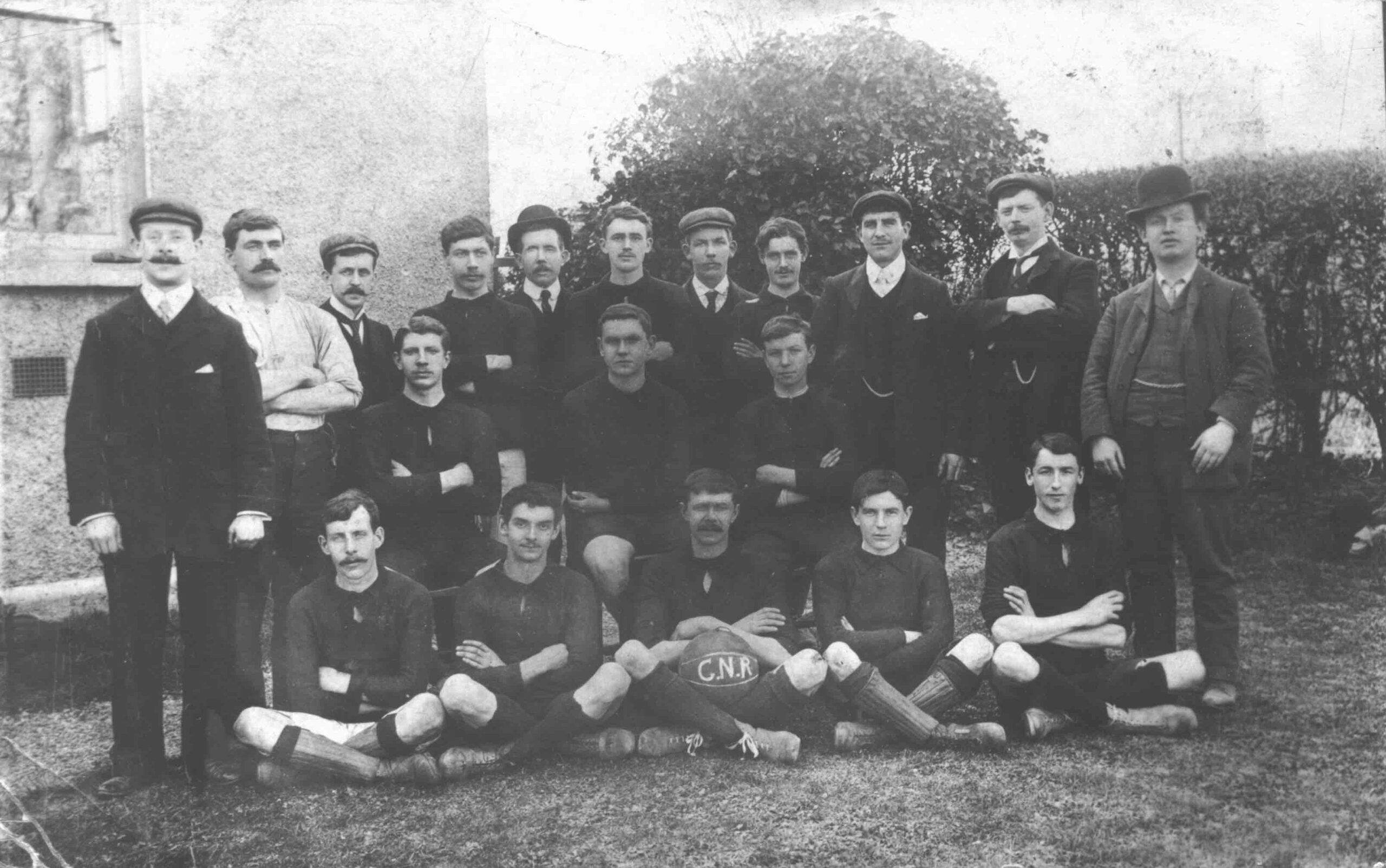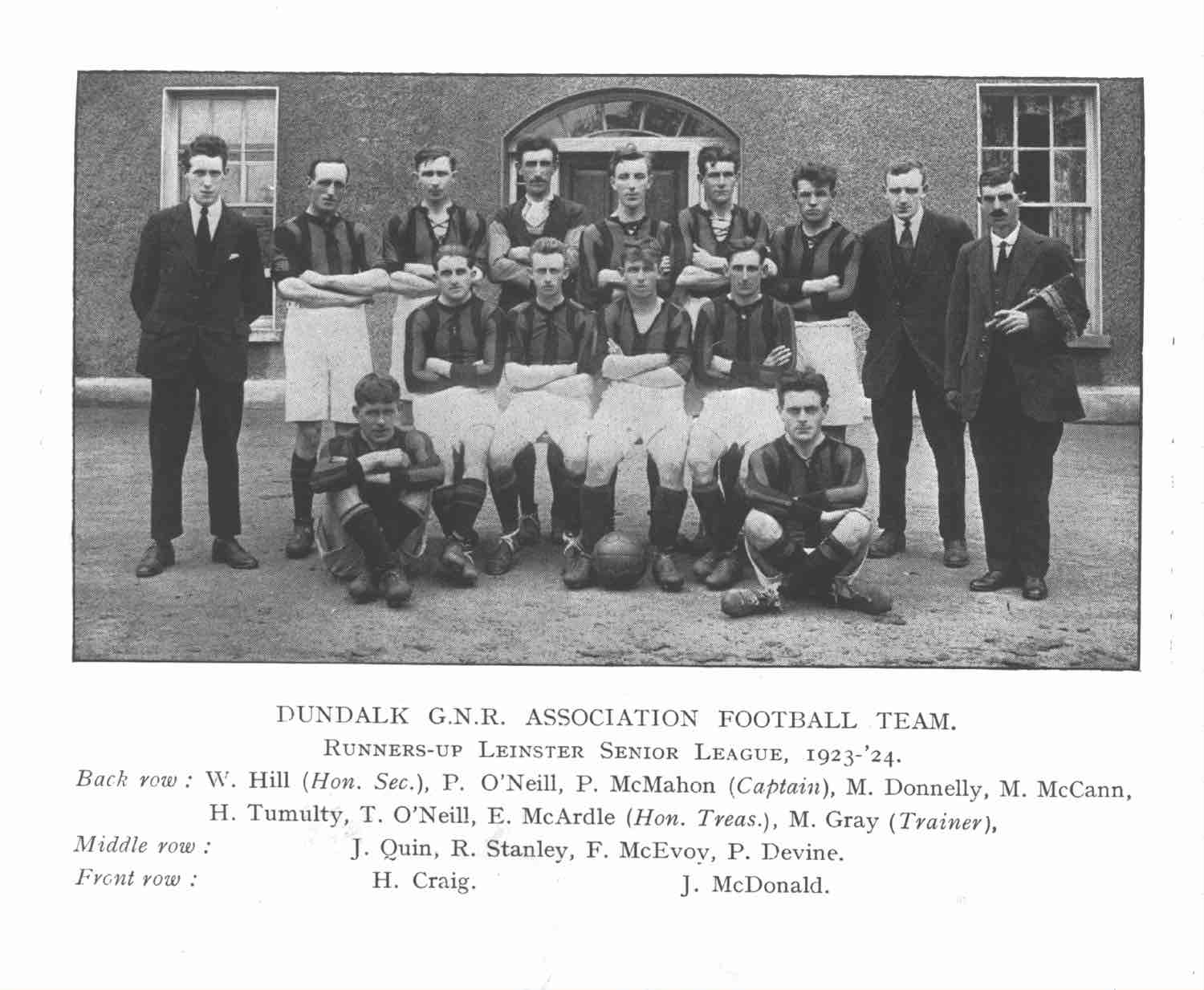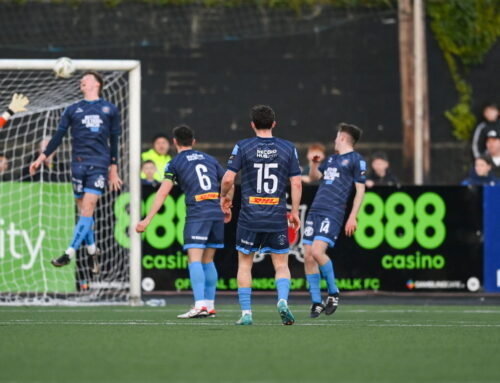One hundred and twenty years ago…
They didn’t know it at the time, but when the likes of William O’Neill and his fellow workers from the Great Northern Railway decided to change codes from rugby to football in 1903, it was the first act of a story full of twists and turns and highs and lows that runs right through to the present day.
The exact date of when the members of the GNR decided to enter a football team that, over time, led to the creation of Dundalk Football Club is unknown but the people of Dundalk were first made aware of their intentions in the Dundalk Democrat, in its ‘Sport and Play’ column, written by ‘Philistine’ on September 26th, 1903.
‘The G N Railway have this season started an Association Club, and have already made application for the Athletic Grounds. Though not aspiring to any great heights as yet, they give promise of turning out some clever elevens.’
‘The present club grew out of the GNR’
As the late Jim Murphy, who provides the voiceover for the video at the top of the page, explained in the ‘Once In A Lifetime’ documentary back in 2015:
“The history of this club goes back to the GNR, the Great Northern Railway, which had its works here, and which was the economic driver of Dundalk for the best part of 70 years.
“At one stage, the GNR supplied almost more than 2,000 of a workforce, all men, and it made a huge impact on the economic life of the town.
“The men from the GNR started a football club, and as you would expect, they called it the GNR Football Club. That was the club which was admitted into the League of Ireland in 1926.
“About three years afterwards, the members changed the name from the GNR to Dundalk. So, the present football club grew out of the GNR – and the GNR itself.”

The earliest known photograph of the GNR, believed to have been taken in 1912.
Oval ball to round ball
Originally set up as a rugby club in 1883, the last reported evidence of the GNR’s involvement in the sport came in December 1902. Less than a year later, wearing black and amber, ‘The Railwaymen were playing with a round ball.
The secretary of the rugby club was William O’Neill, who lived in the railway-provided houses at Ardee Terrace and went on to become the first secretary of the football club.
A practice match was scheduled for the Athletic Grounds in early November 1903 and the first press report of the newly formed GNR Association Club appeared in the Dundalk Herald on December 19th, 1903.
The piece carried a report from a game that took place the previous Sunday at the Fairgreen against an experienced Dundalk Wanderers side that won 4-0.
GNR Mk II
In 1905-06 the GNR became a founder member of the first Dundalk and District League but they didn’t field a team between 1907 and 1909 and no further club activity was reported until 1912 when it was announced that ’the GNR works have formed a new club.’
The GNR were listed as one of six clubs who took part in the 1913/14 Dundalk and District League and in the last season before the First World War, 1914-15, they lost in the Irish Junior Cup to the eventual winners, Shamrock Rovers.
There was no organised football in the Dundalk area during the war but the GNR returned again in 1919, competing in the Newry and District League before entering the newly-organised Dundalk and District League, playing against teams such as Dundalk Town, who appear to have ceased to exist from 1921 on, and the black-and-white clad Dundalk United.
Over the following years, the GNR progressed from being a junior club to competing in the Leinster Senior League, where they spent four seasons (1922-23 to 1925-26) before they were admitted to the Free State League in 1926.
To commemorate the occasion, and to mark 50 years of unbroken senior football in Dundalk, the board and officials of Dundalk Football Club held its Golden Jubilee in 1976. The centenary will take place in 2026.

The GNR side that finished as runners up in the Leinster Senior League in 1923-24
A new journey…
In his book, The History of Dundalk FC – The First 100 Years, Jim Murphy wrote:
‘Having already put the name of Dundalk on the railway map, the men of the GNR works were starting on a new journey, one which in time would place the name securely on another map, the soccer map, where it would remain long after its status as a railway town had been seriously diminished.
‘For the first part of the journey they would start without a ground of their own, or a shilling in the kitty, or even a team capable of meeting league standards. What they clearly had in abundance was courage, spirit, and pride, but more than anything else a strong dose of determination.
‘Certain it is that the first committee and the supporters could hardly have dreamed where the journey would take them and their successors. It would bring successes and failures, rags and riches, heartbreak and joy.
‘For several generations of Dundalk people, the team became the source of immense pride and satisfaction, mixed with fair dollops of despair and disappointment.
‘Along the way, the journey would create a treasure trove of memories, of great games, of great players, of exciting occasions — many of them scattered across Europe — and each generation would create its own heroes and build its own store of memories.’
One hundred and twenty years on, the journey continues.









